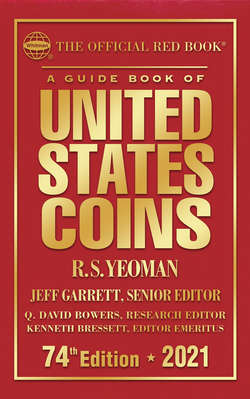Читать книгу A Guide Book of United States Coins 2021 - R.S. Yeoman - Страница 38
На сайте Литреса книга снята с продажи.
Massachusetts “New England” Coinage (1652)
ОглавлениеThe earliest authorized medium of exchange in the New England settlements was wampum. The General Court of Massachusetts in 1637 ordered “that wampamege should passe at 6 a penny for any sume under 12 d.” Wampum consisted of shells of various colors, ground to the size of kernels of corn. A hole was drilled through each piece so it could be strung on a leather thong for convenience and adornment.
Corn, pelts, and bullets were frequently used in lieu of coins, which were rarely available. Silver and gold coins brought over from England, Holland, and other countries tended to flow back across the Atlantic to purchase needed supplies. The colonists, thus left to their own resources, traded with the friendly Native Americans in kind. In 1661 the law making wampum legal tender was repealed.
Agitation for a standard coinage reached its height in 1651. England, recovering from a civil war between the Puritans and Royalists, ignored the colonists, who took matters into their own hands in 1652.
The Massachusetts General Court in 1652 ordered the first metallic currency—the New England silver threepence, sixpence, and shilling—to be struck in the English Americas (the Spaniards had established a mint in Mexico City in 1535). Silver bullion was procured principally from the West Indies. The mint was located in Boston, and John Hull was appointed mintmaster; his assistant was Robert Sanderson (or Saunderson). At first, Hull received as compensation one shilling threepence for every 20 shillings coined. This fee was adjusted several times during his term as mintmaster.
NE Threepence
NE Sixpence
NE Shilling
Early American coins in conditions better than those listed are rare and are consequently valued much higher.
